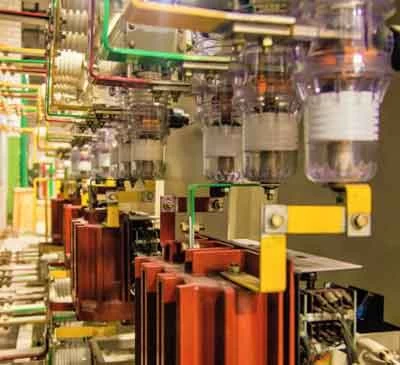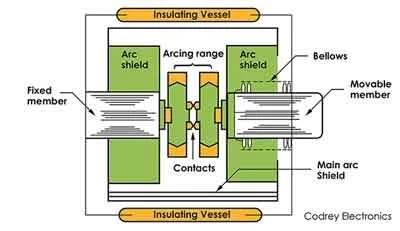Vacuum Circuit Breaker Applications Explained

Vacuum Circuit Breakers (VCBs) have emerged as a preferred choice for a wide range of applications across the electrical engineering landscape, thanks to their distinctive advantages such as high reliability, long service life, and minimal maintenance requirements. VCBs operate by extinguishing the arc formed during the interruption of current flow in a vacuum environment, which is an excellent insulator. This functionality allows them to be used in various settings, from industrial applications to power generation and distribution networks. This article explores the diverse applications of Vacuum Circuit Breakers, highlighting the critical role they play in modern electrical systems.
Medium Voltage (MV) Applications
VCBs reign supreme in the realm of MV protection, offering several compelling advantages:
- High Interrupting Capacity: VCBs excel at interrupting large fault currents, crucial for protecting MV equipment like transformers, switchgear, and motors. This characteristic safeguards these components from extensive damage during fault events, ensuring grid stability.
- Compact Design: Compared to air circuit breakers (ACBs), VCBs offer a more compact and space-efficient design. This advantage is particularly valuable in substations with limited space, allowing for optimized equipment placement and improved layout flexibility.
- Low Maintenance: Unlike ACBs, VCBs require minimal maintenance due to the absence of arcing during operation and the sealed vacuum environment. This translates to reduced operational costs and increased system uptime.
- Environmentally Friendly: VCBs eliminate the environmental concerns associated with oil circuit breakers (OCBs), which are no longer widely used due to the potential for oil leaks and disposal challenges.
Specific Applications
Within the MV domain, VCBs find application in various settings:
- Substations: These critical junctions within power grids house transformers, switchgear, and control equipment. VCBs are strategically placed within substations to protect these components from faults and ensure their reliable operation.
- Distribution Lines: MV lines deliver electricity to industrial and commercial facilities. VCBs are employed at strategic points along these lines to isolate faulty sections and prevent widespread outages.
- Wind Farms: The growing adoption of wind power necessitates reliable protection for wind turbines and associated electrical infrastructure. VCBs, with their compact size and ability to withstand harsh environmental conditions, are well-suited for this application.
- Industrial Plants: VCBs safeguard critical equipment within industrial facilities, such as motors, transformers, and control panels, minimizing downtime and ensuring production continuity.
Low Voltage (LV) Applications
While primarily used in MV applications, VCBs offer niche advantages in specific LV contexts:
- High-Current Applications: In situations requiring the interruption of very high LV currents, VCBs offer a viable option due to their superior interrupting capacity compared to traditional LV circuit breakers like miniature circuit breakers (MCBs).
- Frequent Switching Operations: VCBs excel in environments requiring frequent switching operations, such as in certain industrial settings or within data centers. Their robust design and minimal maintenance requirements make them suitable for these demanding applications.
- Space-Constrained Environments: In situations with limited space, the compact size of VCBs can be a significant advantage compared to bulkier LV circuit breakers.
High Voltage (HV) Applications
While less common, VCBs are also employed in specific HV applications:
- Gas-Insulated Substations (GIS): This advanced technology utilizes VCBs within a sealed enclosure filled with insulating gas. GIS offers advantages in space-constrained environments and in polluted areas due to its superior insulation properties.
- Hybrid Applications: In some HV applications, VCBs may be combined with other technologies like SF6 circuit breakers to leverage the specific advantages of each type.
Limitations of VCBs
Despite their advantages, VCBs also have limitations to consider:
Higher Cost: Compared to ACBs, VCBs typically have a higher initial cost, although the lower maintenance requirements can offset this difference over time.
- Limited Current Ratings: While offering superior interrupting capacity compared to standard LV breakers, VCBs generally have lower current ratings than some specialized HV breakers.
- Vacuum Arc Potential: In rare cases, a phenomenon known as vacuum arc can occur within a VCB during faults, posing potential damage to the breaker. However, modern VCBs are designed to minimize this risk.
Power Generation Plants
In power generation plants, reliability and safety are paramount. VCBs are extensively used in these facilities to protect critical equipment such as generators and transformers from electrical faults. Their ability to rapidly interrupt fault currents helps in preventing damage to expensive machinery and ensures the stability of power generation processes. Furthermore, the vacuum circuit breaker's minimal arc energy release significantly reduces the risk of fire, enhancing operational safety.
Industrial Applications
Industrial settings demand robust electrical protection solutions capable of handling high operational frequencies and harsh conditions. VCBs are ideal for such environments due to their durability and low maintenance needs. They are commonly used to protect motors, drives, and production lines, ensuring uninterrupted operation and safeguarding against production losses due to electrical failures. The quick operation of VCBs minimizes downtime, making them a critical component in maintaining industrial productivity.
Power Distribution Networks
VCBs find significant applications in medium-voltage power distribution networks. They are crucial in substations and switchgear for controlling and protecting the electrical distribution system. Their high interrupting capacity and reliability ensure the efficient distribution of electricity from substations to end-users, including residential, commercial, and industrial customers. The use of VCBs in these applications helps in enhancing the overall reliability and stability of the power distribution network.
Commercial Buildings and Infrastructure
Commercial buildings, such as offices, shopping centers, and hospitals, rely on VCBs to protect their electrical infrastructure. These circuit breakers safeguard HVAC systems, lighting circuits, elevators, and other critical electrical components against overloads and short circuits. The compact size and quiet operation of VCBs make them suitable for installations where space is limited and operational noise is a concern, ensuring the safety and comfort of occupants.
Renewable Energy Systems
The integration of renewable energy sources into the grid has necessitated the adoption of reliable and efficient circuit protection technologies. VCBs are increasingly used in solar and wind power installations to protect inverters, transformers, and connection points to the grid. Their excellent load-breaking capacity and resistance to adverse environmental conditions make them suitable for outdoor installations, contributing to the reliable operation of renewable energy systems.
Railway Electrification
Railway electrification systems require high levels of reliability and safety due to the critical nature of transportation infrastructure. VCBs are used in traction substations, signaling, and railway power supply systems to ensure uninterrupted service and protect against electrical faults. Their robust design and operational reliability under dynamic load conditions make them an ideal choice for railway applications.
Capacitor Bank Switching
VCBs are also employed in switching capacitor banks, which are used for power factor correction in electrical systems. Their ability to handle the high inrush currents associated with capacitor switching without degrading their performance or service life is a key advantage. This application is crucial in industrial and commercial settings, where energy efficiency and the reduction of reactive power charges are important considerations.
Vacuum Circuit Breakers, with their unique combination of high interrupting capacity, compact size, and low maintenance, have carved a significant niche in MV applications. They also offer specific advantages in LV and HV contexts, making them versatile tools in safeguarding various components within power systems. Understanding their diverse applications and limitations is crucial for both electrical professionals and those seeking a deeper understanding of the technology shaping the future of reliable and efficient power delivery.
Vacuum Circuit Breakers have become indispensable in modern electrical systems due to their versatility, reliability, and efficiency. Their applications range from power generation and distribution to industrial processes, commercial buildings, renewable energy systems, and beyond. The unique benefits of VCBs, including their operational reliability, minimal maintenance requirements, and environmental friendliness, make them a superior choice for ensuring the safety and efficiency of electrical installations across various sectors. As electrical systems continue to evolve and demand for reliable circuit protection solutions grows, the role of Vacuum Circuit Breakers is set to become even more critical in the years to come.



